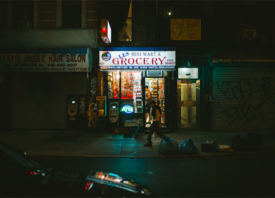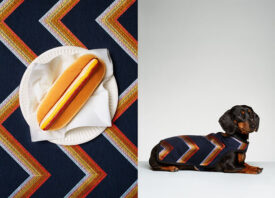Search this site
Thinking of Hiring an Influencer Marketing Specialist? Read This First.

Despite the news of a potential TikTok ban in the US (it’s safe for now), Instagram being in a “flop era,” and Twitter’s ad revenue being down 59%, influencer marketing is doing just fine. In fact, it’s doing more than fine—with the global industry estimated at 21.1 billion dollars (USD) in 2023. That’s double what it was in 2019. And it’s not just big brands who are driving this growth. Brands of every size are using influencers (from macro to nano) to promote their products and services these days.
While it’s not necessarily difficult to hire an influencer, there are some important things to consider before you send that DM or hire that agency. Mind the details, and you’re likely to reap the most benefits (and ROI). We asked top influencer marketing specialists to break it down for us.
Can you share some best practices for brands looking to hire an influencer and get started with influencer marketing?
Permele Doyle, the co-founder and president of Billion Dollar Boy:
Absolutely. Some of our best practices include:
• Define your goals. You need to know what your specific objectives are, such as increasing brand awareness, driving sales, or improving engagement so you can identify the best influencers for your campaign.
• Be very disciplined in influencer identification. It’s extremely important to select and engage influencers who have a strong following and whose values align with the brand. You also have to be intimately familiar with the influencer to make sure there aren’t any red flags, you’re comfortable with the influencer’s tone and character and can stand behind them should an unexpected scenario arise.
• Give influencers creative freedom. This is a very big one for BDB; it’s imperative to give influencers creative freedom to create content that resonates with their audience to ensure that the content feels authentic and natural. The creator industry is much more developed today, and brands are not working with creators to serve as talking heads anymore. Trust your creators and partners!
• Build long-term relationships. Working with influencers on multiple campaigns or creating ambassador programs will help foster ongoing partnerships and brand loyalty.
Our BDB Shop also offers the Creator Marketing Handbook, which dives deeper into how marketers can integrate influencers into marketing strategies and get the most return on their influencer marketing initiatives.
Lara Daniel, the co-founder and CEO of Pulse Advertising:
Yes, here are some tips and best practices for brands looking to get started with influencer marketing:
• Clearly define your campaign objectives and target audience.
• Thoroughly research and vet potential influencers to ensure alignment with your brand values.
• Foster authentic relationships with influencers by providing creative freedom and enabling open communication.
• Develop long-term partnerships.
• Track and analyze campaign performance using relevant metrics and key performance indicators (KPIs) to measure success and optimize future campaigns.
Alessandro Bogliari, the co-founder and CEO at The Influencer Marketing Factory:
Trust the influencer. They know what works and what doesn’t on social media. Instead of trying to dictate the typical corporate script, it is better to ask for their feedback and be very communicative.
How do you approach working with micro-influencers versus macro-influencers? Is the process any different for brands looking to hire an influencer in these categories?
Doyle: We do approach micro and macro-influencers somewhat differently, as they typically have different audiences, levels of engagement, and pricing structures.
In general, nano-influencers (ranging from 1,000 to 100,000 followers) may have more niche audiences, which can make them particularly effective for campaigns targeting specific subcultures or interests. They have more personal connections with their followers and therefore may have higher engagement rates. They generally charge less and may be more cost-effective for smaller brands with more limited budgets.
Micro-influencers can be great candidates to build long-term relationships and partnerships with, as they may be more open to collaboration across longer-term or multiple campaigns across a longer time period.
In contrast, macro-influencers (ranging from 100,000 to millions of followers) have more mainstream audiences, which can make them very effective for campaigns that target a broad range of consumers. They interact less with followers on an individual basis.
When working with macro influencers, we tend to focus more on campaign planning and execution and sometimes fee negotiation, as these influencers are more well-established and have their own processes for creating and promoting content.
This is something that we champion at BDB; we see influencers as de facto creative directors who know their audiences extremely well and have the vision for the content they want to create. As the marketing agency, our job is to give the creator or creators a starting point or framework and give them a lot of space to create and make magic.
Bogliari: Micro-influencers tend to drive more conversions. They have a smaller following, but that smaller following is usually stronger in the sense that the relationship between the influencer and their audience is more intimate.
Macro-influencers are really good for building brand awareness and driving traffic. But sometimes macro influencers are followed by people who might not be necessarily influenced by them—maybe they’re following them just because they are macro influencers.
We usually recommend doing a good mix of micro, medium, and macro influencers in order to minimize the risk. So you’re not only giving money to one big macro-influencer and putting all your eggs in one basket. It’s good to diversify the type of approaches.
Usually, our approach is also to spend a little bit of money on different social channels/platforms because each medium is different: different demographics, different formats, different styles, and different ways of communicating.
How many influencers does a typical brand usually work with, in your experience?
Tiffany Romero, the president of influencer management at the digital advertising agency Sway Group:
That varies a lot. We have a large campaign right now where we’re only using, like, five macro-influencers (really big influencers). And then we have done programs where we’ve used 200 nano influencers. It really depends on how the brand wants to reach their goals. Sometimes that’s with a celebrity. Sometimes that’s with volume.
What are some elements that make an influencer campaign successful, and what should brands keep in mind when hoping to hire an influencer?
Doyle: In making campaigns successful, one thing that we as an agency do really well is that we always advise and help our brand clients dig more into subcultures and even micro-cultures as opposed to just targeting demographics—-e.g. the popularity of trends on TikTok such as renovating dolls houses, crocheting, pottery, etc. This is where real, authentic engagement lies.
Bogliari: In terms of campaigns overall, what I can say is that it’s about soft skills in terms of selling more than hard selling. It doesn’t work anymore just to show a product online and say, “Buy these.” It’s about how you embed that product into something else. Maybe it’s great storytelling, a funny video, or an informative video.
What are some recent trends in this industry you’re seeing so far in 2023?
Romero: We continue to move away from highly edited static content to real and raw videos. TikTok continues to grow in popularity.
Brands are also interested again in in-person events and experiences, and they’re starting to sponsor events and have influencers come. We’ve all seen the Tart Trips, right? On TikTok, Tart has taken a handful of creators on different trips. We also have brands that are big box stores that are wanting influencers and creators to visit the store and have a shopping experience, and the entire program is based around that.
There are soft openings where brands want creators and influencers there. We just had a client that had a booth set up outside of a really large sporting event, and we got a large influencer to attend that. Now that Covid has really slowed down, we’re seeing a lot more interest in in-person events.
What metrics do you provide to advertisers once a campaign has run?
Doyle: Our most standard metrics are engagements and average engagement rate. KPIs also vary by client campaign and goals, but other core metrics that we commonly deliver include:
• # of participating influencers
• # pieces of content
• Total organic reach
• Impressions
• Views
• % positive sentiment
Daniel: Once a campaign finishes, we provide brands with comprehensive and bespoke metrics and insights to measure the performance. This includes data such as reach, impressions, engagement rates, click-through rates (CTR), conversions, brand sentiment analysis, and any other relevant KPIs specified in the campaign objectives. These metrics help us and the brand evaluate the success of the campaign and make informed decisions for future collaborations.
Romero: We provide a ton of first-party data pulled directly from the platforms via their APIs. This includes impressions, clicks, shares, saves, likes, and comments.
Do you find that brands looking for ROI specifically, or are they also satisfied with raising brand awareness and growing their followings on Instagram and TikTok?
Romero: It really depends on the brand. Often smaller brands are looking for increased clicks/sales that track directly back to the campaign. Larger (national) brands are often thrilled with increased engagement and chatter.
Bogliari: I would say that brands are a bit more ROI-focused nowadays. They’re not only interested in so-called vanity metrics such as views, likes, and comments. They are looking for conversions.
No matter what we’re working on, we’re always looking at CPM (the cost per mille for a thousand impressions), the cost per click, the CTR (the click-through rate for the campaign). If it is on Instagram, we will look at sticker taps. If it’s on TikTok in-feed ads, we look at how many conversions (CPI, CPA, CPL) the client got thanks to that specific ad.

Alessandro Bogliari is the Co-Founder and CEO of The Influencer Marketing Factory, a global influencer marketing agency that helps brands launch influencer marketing campaigns On TikTok, Instagram, and YouTube. He is also a member of the Forbes Agency Council and a member of The Drum Network.

Lara Daniel is the Co-Founder and CEO of Pulse Advertising, a market-leading influencer marketing agency. Leading a global team of 100+ employees, Lara Daniel combines her marketing acumen with business expertise to establish partnerships with brands including LVMH, L’Oréal, BMW, Ferrero, Hugo Boss, and more.

Permele Doyle is the Co-Founder and President of Billion Dollar Boy. Billion Dollar Boy is a global influencer marketing agency creating award-winning influencer-led advertising campaigns, with a team of 150 influencer marketers across five offices.
Tiffany Romero is the President of Influencer Management at Sway Group, a full-service influencer marketing agency. She is a savvy marketer with years of experience leveraging the brand/influencer relationship. Romero has been featured in the New York Times, CBS, Huffington Post, ABC News, MediaPost, and Today’s Leading Woman.
Further Reading:
• 14 Influencers Talk About Their Most Popular Image on Instagram
• Whimsical Paper Cut Outs Lead to Instagram Stardom, World Travel



